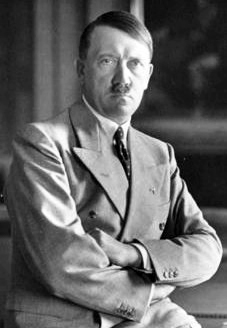
The Associated Press rejects a historian’s claim that it collaborated with the Nazis to gloss over Adolf Hitler’s genocidal attacks on Jews in 1941.
The Associated Press is refuting a historian’s assertion that the news agency collaborated with the Nazi regime in the 1930s and supplied American newspapers with material from the Third Reich’s propaganda ministry.
In an article published in the academic journal Studies in Contemporary History, historian Harriet Scharnberg asserts that AP was able to continue operating under the Nazi regime, long after other news agencies had been forced out, by cooperating with the fascist German government.
The AP agreed to abide by the Nazi “editor’s law,” forbidding any publication “calculated to weaken the strength of the Reich abroad or at home,” according to The Guardian, which first reported on the research Wednesday (March 30). The news agency also hired reporters who worked in the Nazi party’s propaganda division, including photographer Franz Roth, who was in the propaganda unit of the SS and whose photos were approved by Hitler himself.
Scharnberg also contends the AP allowed the use of its photographs in antisemitic propaganda, including the publications “The Sub-Human” and “The Jews in the USA.”
By working with the Nazis, the AP helped that totalitarian regime “portray a war of extermination as a conventional war,” the historian said in the interview with The Guardian. For example, Roth’s photos following the 1941 Nazi invasion of Lviv in western Ukraine focused on the atrocities carried out by Soviet troops before the arrival of the Nazis and ignored the violence of the German forces against the Jewish residents.
“The pictures played their part in disguising the true character of the war led by the Germans,” Scharnberg said. “Which events were made visible and which remained invisible in AP’s supply of pictures followed German interests and the German narrative of the war.”
The Associated Press said in a statement that Scharnberg’s research “describes both individuals and their activities before and during the war that were unknown to AP.” The news agency says it is conducting a review “to further our understanding of the period.”
“AP rejects the suggestion that it collaborated with the Nazi regime at any time,” the statement goes on to say. “Rather, the AP was subjected to pressure from the Nazi regime from the period of Hitler’s coming to power in 1933 until the AP’s expulsion from Germany in 1941. AP staff resisted the pressure while doing its best to gather accurate, vital and objective news for the world in a dark and dangerous time.”
The AP removed Roth’s photographs from its website after the study’s publication, The Guardian reported. The news agency is looking into photographs credited to Roth after Scharnberg’s “new-to-us reference to him,” an AP spokesman told The New York Times.
A German photo agency that was a subsidiary of AP Britain produced the images fromNazi Germany and the territory it occupied, and “U.S. newspapers were supplied with some of these images through the German subsidiary,” the AP’s statement says. Images that came from the Nazi government or its propaganda wings were “labeled as such in their captions or photo credits.”
The news agency also says that it had no control over the use of its photo archive after the U.S. declared war on Germany on Dec. 11, 1941, and the regime expelled all foreign news organizations.




